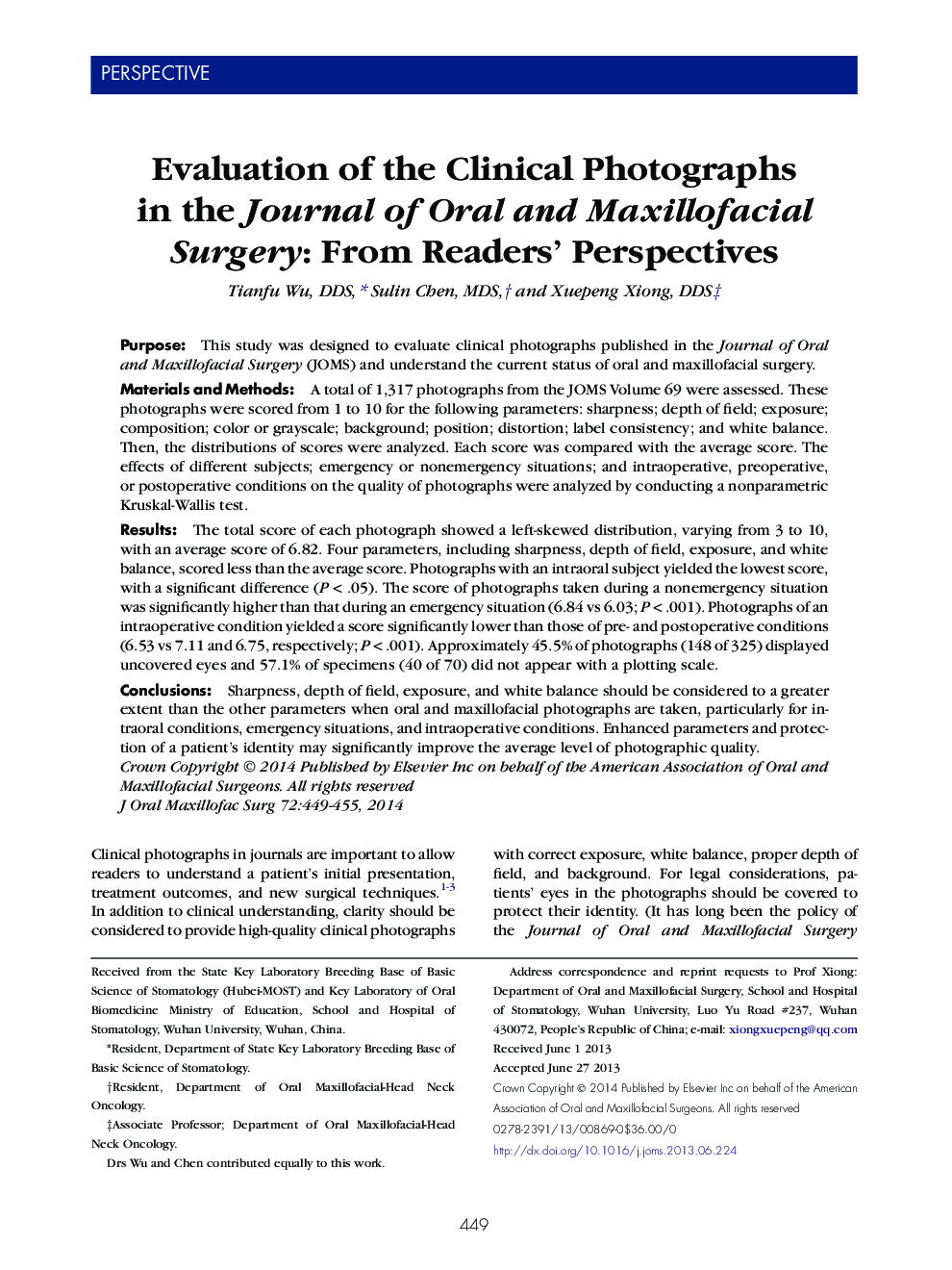| Article ID | Journal | Published Year | Pages | File Type |
|---|---|---|---|---|
| 3157933 | Journal of Oral and Maxillofacial Surgery | 2014 | 7 Pages |
PurposeThis study was designed to evaluate clinical photographs published in the Journal of Oral and Maxillofacial Surgery (JOMS) and understand the current status of oral and maxillofacial surgery.Materials and MethodsA total of 1,317 photographs from the JOMS Volume 69 were assessed. These photographs were scored from 1 to 10 for the following parameters: sharpness; depth of field; exposure; composition; color or grayscale; background; position; distortion; label consistency; and white balance. Then, the distributions of scores were analyzed. Each score was compared with the average score. The effects of different subjects; emergency or nonemergency situations; and intraoperative, preoperative, or postoperative conditions on the quality of photographs were analyzed by conducting a nonparametric Kruskal-Wallis test.ResultsThe total score of each photograph showed a left-skewed distribution, varying from 3 to 10, with an average score of 6.82. Four parameters, including sharpness, depth of field, exposure, and white balance, scored less than the average score. Photographs with an intraoral subject yielded the lowest score, with a significant difference (P < .05). The score of photographs taken during a nonemergency situation was significantly higher than that during an emergency situation (6.84 vs 6.03; P < .001). Photographs of an intraoperative condition yielded a score significantly lower than those of pre- and postoperative conditions (6.53 vs 7.11 and 6.75, respectively; P < .001). Approximately 45.5% of photographs (148 of 325) displayed uncovered eyes and 57.1% of specimens (40 of 70) did not appear with a plotting scale.ConclusionsSharpness, depth of field, exposure, and white balance should be considered to a greater extent than the other parameters when oral and maxillofacial photographs are taken, particularly for intraoral conditions, emergency situations, and intraoperative conditions. Enhanced parameters and protection of a patient's identity may significantly improve the average level of photographic quality.
